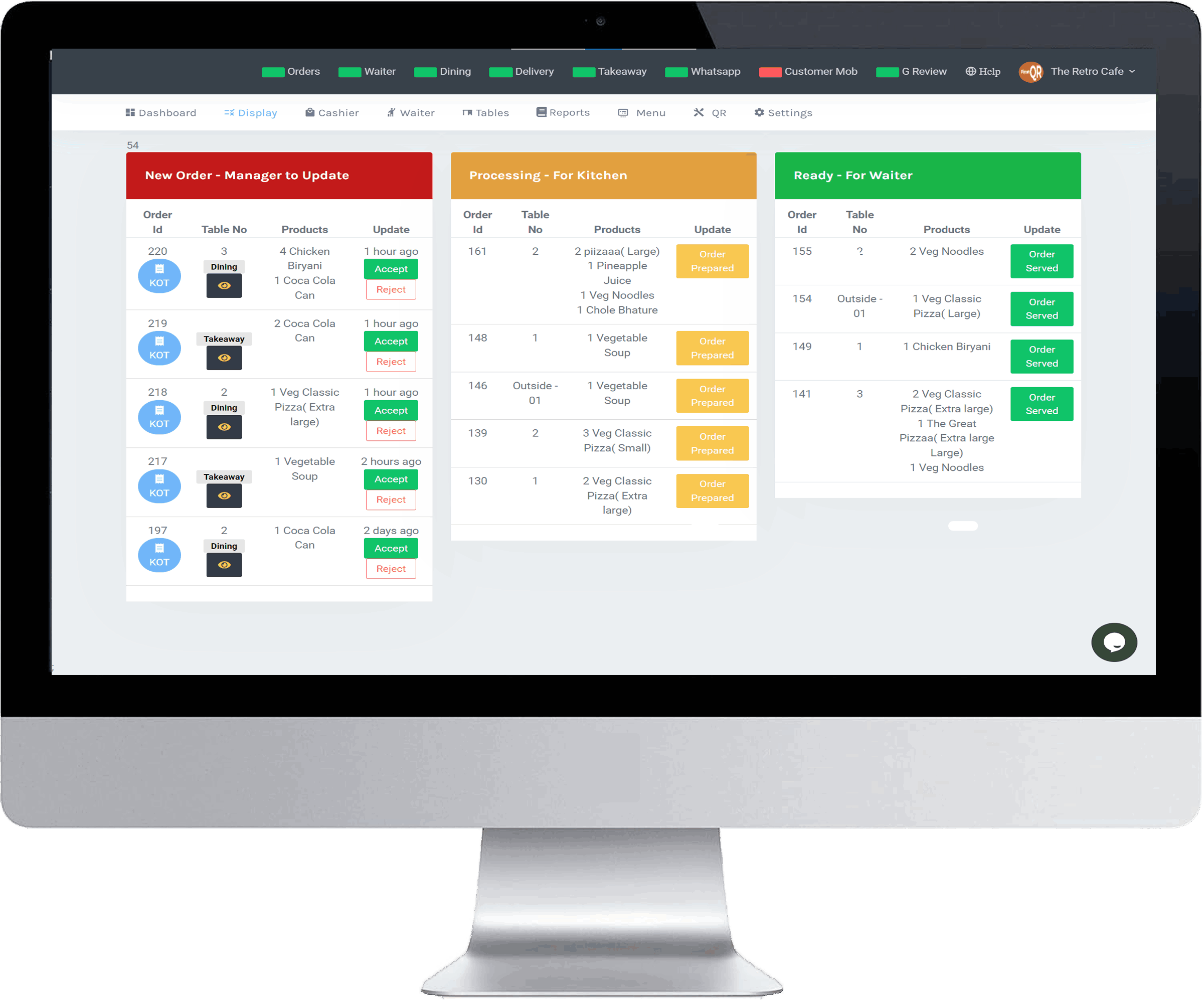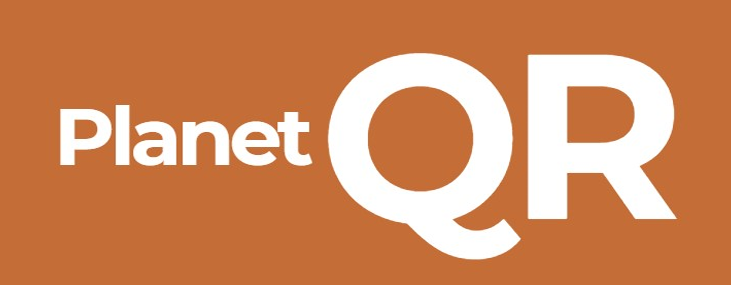Software Solutions for Your Restaurant Operations
Blog Created On - 25 Jun 2023
Are you a restaurant owner in India looking to take your operations to the next level? Look no further! In this fast-paced and competitive industry, staying ahead of the game is crucial. That's where cutting-edge software solutions come in. Revolutionize your restaurant operations with the latest technology and streamline your processes like never before. From inventory management to online ordering, reservation systems, and personalized customer experiences, these software solutions are designed to enhance efficiency and boost profitability. With a wide range of options available in the market, finding the perfect software solution for your restaurant can be overwhelming. But fear not, as we are here to guide you through the process. In this article, we will explore the top software solutions available in India that can transform your restaurant and help you stay ahead of the competition. Get ready to take your restaurant to new heights with the power of technology.

Benefits of Using Restaurant Software Solutions
Running a restaurant can be a complex and demanding task. There are numerous aspects to manage, from inventory and menu planning to staff scheduling and customer service. With the right restaurant software solution, you can streamline these processes and reap a multitude of benefits. Firstly, restaurant software solutions provide accurate and real-time data, allowing you to make informed decisions about your business. You can track inventory levels, monitor sales trends, and identify popular menu items. This data-driven approach enables you to optimize your menu, reduce waste, and increase profitability.
Moreover, restaurant software solutions automate manual tasks, saving you valuable time and resources. For instance, you can automate order taking and payment processing, eliminating the need for manual data entry and reducing errors. This streamlined process not only enhances the customer experience but also improves operational efficiency. Additionally, restaurant software solutions enable you to enhance customer engagement through personalized experiences. By capturing customer data and preferences, you can tailor promotions, recommend dishes, and provide a seamless dining experience that keeps customers coming back.
Common Features of Restaurant Software Solutions
Restaurant software solutions come with a wide range of features that cater to the unique needs of the industry. While the specific features may vary depending on the software provider, there are some common functionalities that you can expect. One of the key features is inventory management. With this feature, you can easily track and manage your inventory levels, set up automated reordering, and receive real-time notifications for low stock items. This ensures that you never run out of ingredients and can meet customer demands without delays.
Another important feature is the online ordering system. In today's digital age, offering online ordering is essential for restaurants to stay competitive. It allows customers to conveniently place orders from the comfort of their homes or offices, increasing your reach and revenue. The online ordering system should be user-friendly and integrated with your restaurant software for seamless order processing and tracking.
Reservation management is another crucial feature, especially for fine-dining establishments. With this feature, you can easily manage table reservations, allocate seating, and avoid overbooking. This ensures a smooth dining experience for your customers and helps you maximize your seating capacity.
Types of Restaurant Software Solutions
When it comes to restaurant software solutions, there is no one-size-fits-all approach. Different restaurants have different needs and requirements. Therefore, it's important to understand the different types of software solutions available in the market. The most common types include:
1. Point of Sale (POS) Systems: POS systems are the heart of any restaurant's operations. They handle tasks such as order taking, payment processing, and sales reporting. POS systems can be either hardware-based or cloud-based, offering different levels of flexibility and scalability.
2. Inventory Management Systems: As mentioned earlier, inventory management systems help you track and manage your inventory levels. They enable you to set up automated reordering, monitor ingredient usage, and generate reports for better inventory control.
3. Online Ordering Systems: Online ordering systems allow customers to place orders through your website or mobile app. They offer features like menu customization, order tracking, and online payment processing. Integration with your POS system is essential for seamless order management.
4. Reservation Management Systems: Reservation management systems help you efficiently manage table reservations, allocate seating, and avoid overbooking. They often come with features like guest profiles, table status updates, and waitlist management.
5. Customer Relationship Management (CRM) Systems: CRM systems help you gather and analyze customer data, enabling you to personalize marketing campaigns, offer loyalty programs, and enhance customer satisfaction. Integration with your POS system is crucial for capturing accurate data.
Choosing the Right Restaurant Software Solution for Your Business
Now that you are familiar with the benefits and types of restaurant software solutions, it's time to choose the right one for your business. The key to making the right decision is to assess your specific needs and requirements. Start by identifying the pain points in your current operations and the areas where you need improvement. For example, if you struggle with inventory management and waste control, prioritize software solutions with robust inventory management features.
Next, consider your budget and scalability requirements. While investing in a feature-rich software solution may seem tempting, it's important to evaluate its long-term costs and whether it aligns with your growth plans. Look for software providers that offer flexible pricing models, scalable solutions, and excellent customer support.
Additionally, consider the ease of use and training requirements. A user-friendly interface and intuitive design can significantly reduce the learning curve for your staff. Look for software solutions that offer comprehensive training and ongoing support to ensure a smooth transition.
Finally, take advantage of free trials and demos offered by software providers. This allows you to test the software's functionality and suitability for your business before making a commitment.
Implementing Restaurant Software Solutions in Your Operations
Once you have selected the right software solution for your restaurant, it's time to implement it into your operations. Start by creating an implementation plan that outlines the steps, timeline, and responsibilities. This plan should include tasks such as data migration, hardware setup, software installation, and staff training.
Data migration is a critical step in the process. Ensure that your existing data, such as menu items, pricing, and customer information, is accurately transferred to the new software. This may require collaboration with the software provider or the assistance of a data migration specialist.
Hardware setup involves installing the necessary equipment, such as POS terminals, printers, and tablets, to support the software solution. Consult with the software provider or a technology expert to ensure compatibility and proper installation.
Staff training is crucial for successful software implementation. Allocate sufficient time for training sessions and provide ongoing support to address any questions or issues that may arise. Consider creating training materials, conducting hands-on sessions, and assigning a dedicated point of contact for staff inquiries.
Training and Onboarding Staff for Restaurant Software Solutions
The success of your restaurant software solution depends on how well your staff can utilize its features. Therefore, investing in comprehensive training and onboarding is essential. Start by identifying the key staff members who will be responsible for using the software on a daily basis. These individuals should receive in-depth training on all aspects of the software, including order taking, payment processing, and reporting.
Consider conducting training sessions in small groups to facilitate better engagement and understanding. Hands-on practice and role-playing exercises can help staff members become familiar with the software's functionalities and build confidence in using it.
Additionally, provide ongoing support and resources to address any questions or issues that may arise. This can include a dedicated support hotline, knowledge base articles, and regular check-ins with staff to ensure their comfort and proficiency with the software.
Integrating Restaurant Software Solutions with Other Systems
To fully leverage the capabilities of your restaurant software solution, it's important to integrate it with other systems in your restaurant. Integration allows for seamless data flow between different software solutions, eliminating the need for manual data entry and reducing errors.
Firstly, integrating your restaurant software with your accounting system can streamline financial processes. This includes automatically syncing sales data, expenses, and payroll information, saving time and ensuring accurate financial reporting.
Secondly, integrating with your customer relationship management (CRM) system can provide valuable insights into customer behavior and preferences. This integration enables you to personalize marketing campaigns, track customer loyalty, and provide a seamless dining experience.
Finally, integration with online delivery platforms can help streamline order management and increase your reach. By automatically syncing orders from platforms like Uber Eats or Zomato, you can efficiently process orders, track deliveries, and provide real-time updates to customers.
Cost Considerations of Restaurant Software Solutions
When implementing a restaurant software solution, it's important to consider the costs involved. The pricing structure for restaurant software solutions varies depending on factors such as the type of solution, the number of users, and additional features required. Here are some cost considerations to keep in mind:
1. Licensing Fees: Most software solutions require an upfront licensing fee. This fee may be a one-time payment or a recurring annual fee. It's important to understand the terms and conditions of the licensing agreement before making a commitment.
2. Hardware Costs: Depending on the software solution, you may need to invest in additional hardware, such as POS terminals, tablets, or printers. Consider the cost of these hardware components and their compatibility with the software.
3. Subscription Fees: Some software solutions operate on a subscription-based model, where you pay a monthly or annual fee. Consider the long-term costs of the subscription and whether it aligns with your budget.
4. Training and Support: Training and support are essential for successful software implementation. Some software providers offer training and support as part of their package, while others may charge an additional fee. Factor in these costs when evaluating the overall investment.
5. Customization and Integration: If you require customization or integration with other systems, additional costs may apply. Consult with the software provider to understand the pricing structure for these services.
Remember, while cost is an important factor, it should not be the sole determining factor. Consider the value and benefits that the software solution can bring to your restaurant, and evaluate the return on investment in terms of increased efficiency, reduced costs, and improved customer satisfaction.
Top Restaurant Software Solutions in India
Planet QR is a cloud-based complete restaurant management platform. It has a customer operated POS system and offers a range of features like billing, menu management, qr ordering, online ordering, online payments, loyalty program and reservations. It is known for its affordability, ease of use, user-friendly interface, robust reporting capabilities, and seamless integration with any kind of setup. It caters to the needs of both small cafes and large restaurant chains.
Case Studies of Successful Restaurants Using Software Solutions
To further illustrate the benefits of restaurant software solutions, let's take a look at some real-life case studies of successful restaurants that have implemented these solutions.
1. Case Study: "The Spice House"
"The Spice House" is a popular fine-dining restaurant in Mumbai. They were facing challenges in managing their inventory, tracking sales, and providing personalized customer experiences. They decided to implement a restaurant software solution that offered robust inventory management, sales reporting, and CRM capabilities.
By using the software solution, "The Spice House" was able to accurately track their inventory, reduce waste, and optimize their menu. They could analyze sales data to identify their top-selling dishes and adjust their menu accordingly. The CRM capabilities allowed them to capture customer preferences and offer personalized promotions, resulting in increased customer satisfaction and loyalty.
2. Case Study: "Café Bliss"
"Café Bliss" is a small café located in Bangalore. They wanted to offer online ordering to their customers but were struggling with managing orders and payments manually. They decided to implement an online ordering system that seamlessly integrated with their POS system.
With the online ordering system, "Café Bliss" saw a significant increase in orders and revenue. Customers appreciated the convenience of ordering through their website, and the seamless integration with their POS system allowed for efficient order processing and tracking. The café was able to expand its customer base and provide a better overall experience.
These case studies highlight the transformative impact that restaurant software solutions can have on a business. By leveraging the power of technology, restaurants can streamline their operations, improve efficiency, and enhance customer satisfaction.
Conclusion
In today's competitive restaurant industry, staying ahead of the game is essential. By embracing cutting-edge software solutions, you can revolutionize your restaurant operations and take your business to new heights. From inventory management to online ordering, reservation systems, and personalized customer experiences, these software solutions offer a wide range of benefits.
When choosing a restaurant software solution, consider your specific needs, budget, and scalability requirements. Implement the solution carefully, ensuring proper data migration, hardware setup, and staff training. Integrate your software solution with other systems to maximize its capabilities. Evaluate the costs involved and the value it can bring to your business.
Finally, explore the top restaurant software solutions available in India, and consider real-life case studies of successful restaurants. By making informed decisions and leveraging technology, you can transform your restaurant and stay ahead of the competition. Get ready to revolutionize your restaurant operations and drive success with the power of cutting-edge software solutions in India.


